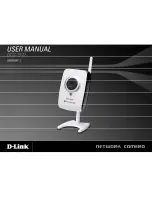
6
DBI-SALA connectors (snap hooks and carabiners) are designed to be used only as specifi ed in each
product’s user’s instructions. See Figure 7 for illustration of the inappropriate connections stated below. DBI-
SALA snap hooks and carabiners should not be connected:
To a D-ring to which another connector is attached.
A.
In a manner that would result in a load on the gate.
B.
I
C. n a false engagement, where features that protrude from the snap hook or carabiner catch on the
anchor and without visual confi rmation seems to be fully engaged to the anchor point.
T
D. o each other.
D
E.
irectly to webbing or rope lanyard or tie-back (unless the manufacturer’s instructions for both the
lanyard and connector specifi cally allow such a connection).
T
F.
o any object which is shaped or dimensioned such that the snap hook or carabiner will not close and
lock, or that roll-out could occur.
NOTE: Other than 3,600 lb. (16 kN) gated hooks, large throat opening snap hooks should not be
connected to standard size D-rings or similar objects which will result in a load on the gate if the hook or
D-ring twists or rotates. Large throat snap hooks are designed for use on fi xed structural elements such as
rebar or cross members that are not shaped in a way that can capture the gate of the hook.
Other Restrictions:
Do not make connections where the hook locking mechanism can come into contact with a structural
•
member or other equipment and potentially release the hook.
Do not connect a snap hook into a loop or thimble of a wire rope or attach in any way to a slack wire
•
rope.
The snap hook must be free to align with the applied load as intended (regardless of the size or shape of
•
the mating connector).
A carabiner may be used to connect to a single or pair of soft loops on a body support such as a body
•
belt or full body harness, provided the carabiner can fully close and lock. This type of connection is not
allowed for snap hooks.
A carabiner may be connected to a loop or ring connector that is already occupied by a choker style
•
connector. This type of connection is not allowed for snap hooks.
Figure 6 - Unintentional Disengagement (Rollout)
If the connecting element to which a snap hook (shown) or carabiner
attaches is undersized or irregular in shape, a situation could occur
where the connecting element applies a force to the gate of the snap
hook or carabiner. This force may cause the gate (of either a self-
locking or a non-locking snap hook) to open, allowing the snap hook
or carabiner to disengage from the connecting point.
Small ring or other
non-compatibly
shaped element
Force is applied
1.
to the Snap
Hook.
The Gate
2.
presses against
the Connecting
Ring.
The Gate opens
3.
allowing the
Snap Hook to
slip off.
Figure 7 - Inappropriate Connections
2.10 CONNECTING SUBSYSTEMS: Connecting subsystems (self-retracting lifeline, lanyard, rope grab and
lifeline, cable sleeve) must be suitable for your application (see Table 1). See subsystem manufacturer’s
instructions for more information. Some harness models have web loop connection points. Do not use snap
hooks to connect to web loops. Use a self-locking carabiner to connect to a web loop. Ensure the carabiner
cannot cross-gate load (load against the gate rather than along the backbone of the carabiner). Some
lanyards are designed to choke onto a web loop to provide a compatible connection. See Figure 8. Lanyards
may be sewn directly to the web loop forming a permanent connection. Do not make multiple connections
onto one web loop, unless choking two lanyards onto a properly sized web loop.







































